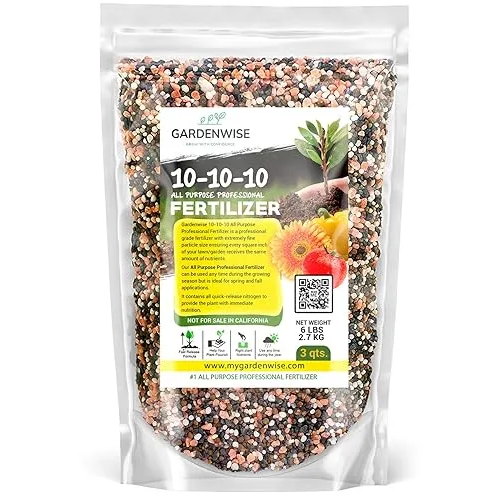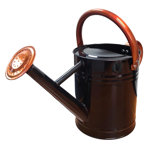It is vital to fertilize mandevilla for the best display – here’s the perfect regime for stunning vines covered in dazzling blooms to attract hummingbirds
Discover when to fertilize mandevilla, along with the best feeds to use
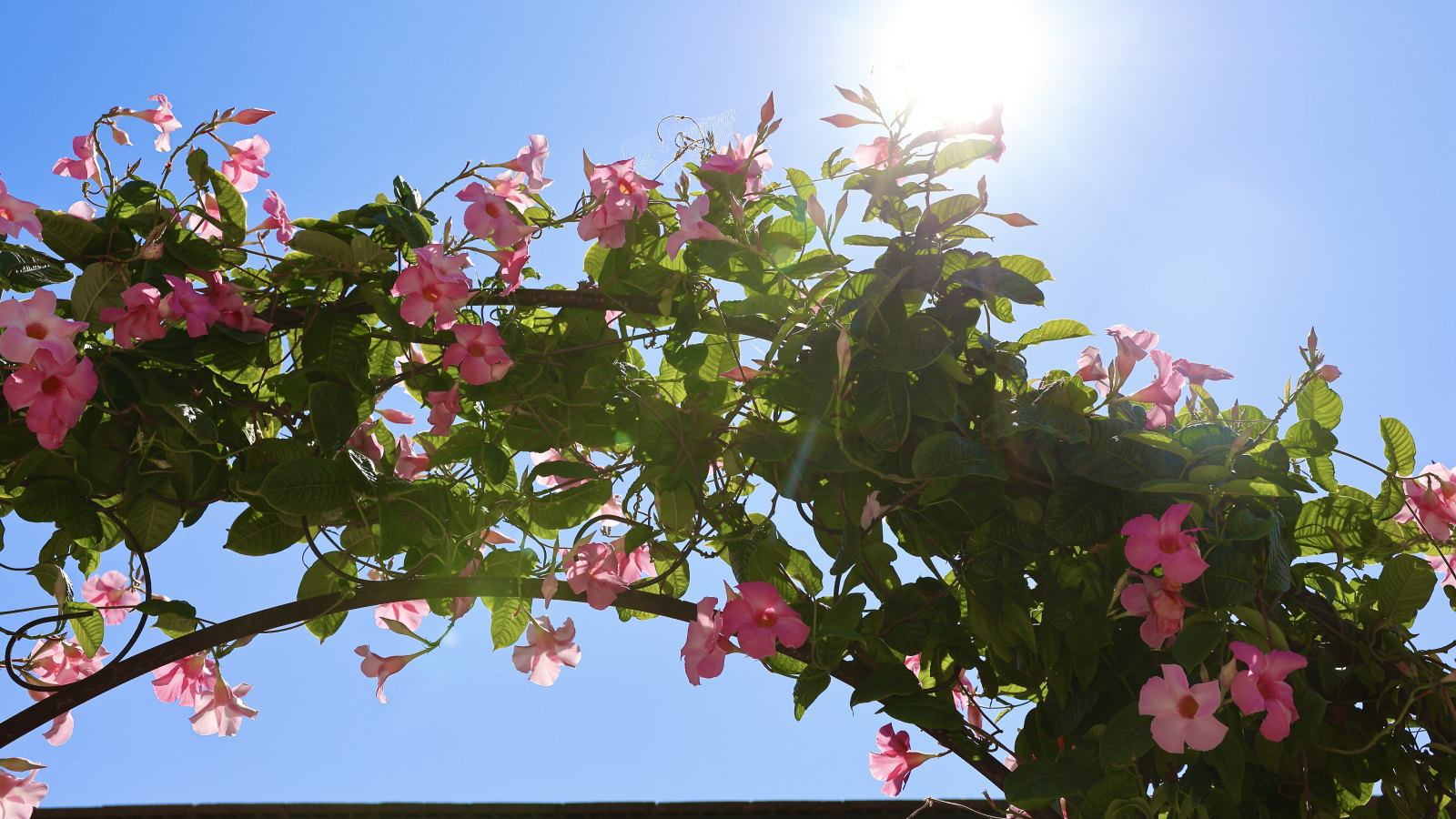

Mandevilla is a show-stopping climber with large, impactful blooms that attract lots of bees, butterflies, and hummingbirds. Along with the showy flowers, mandevilla grows quickly every year, up to 10 feet per season, making fertilizing plants a must to keep them looking at their best.
The flowering vine can be grown outdoors year-round in warmer climates, brought indoors to overwinter, or cultivated as an annual. However you grow mandevilla, feeding is a crucial piece of maintenance to keep plants growing strongly and putting on a top display of vibrant flowers.
So, how often do you need to fertilize mandevilla? Here, we answer that important question, highlighting what makes a perfect feeding regime for mandevilla and how to pick the best feeds to use.
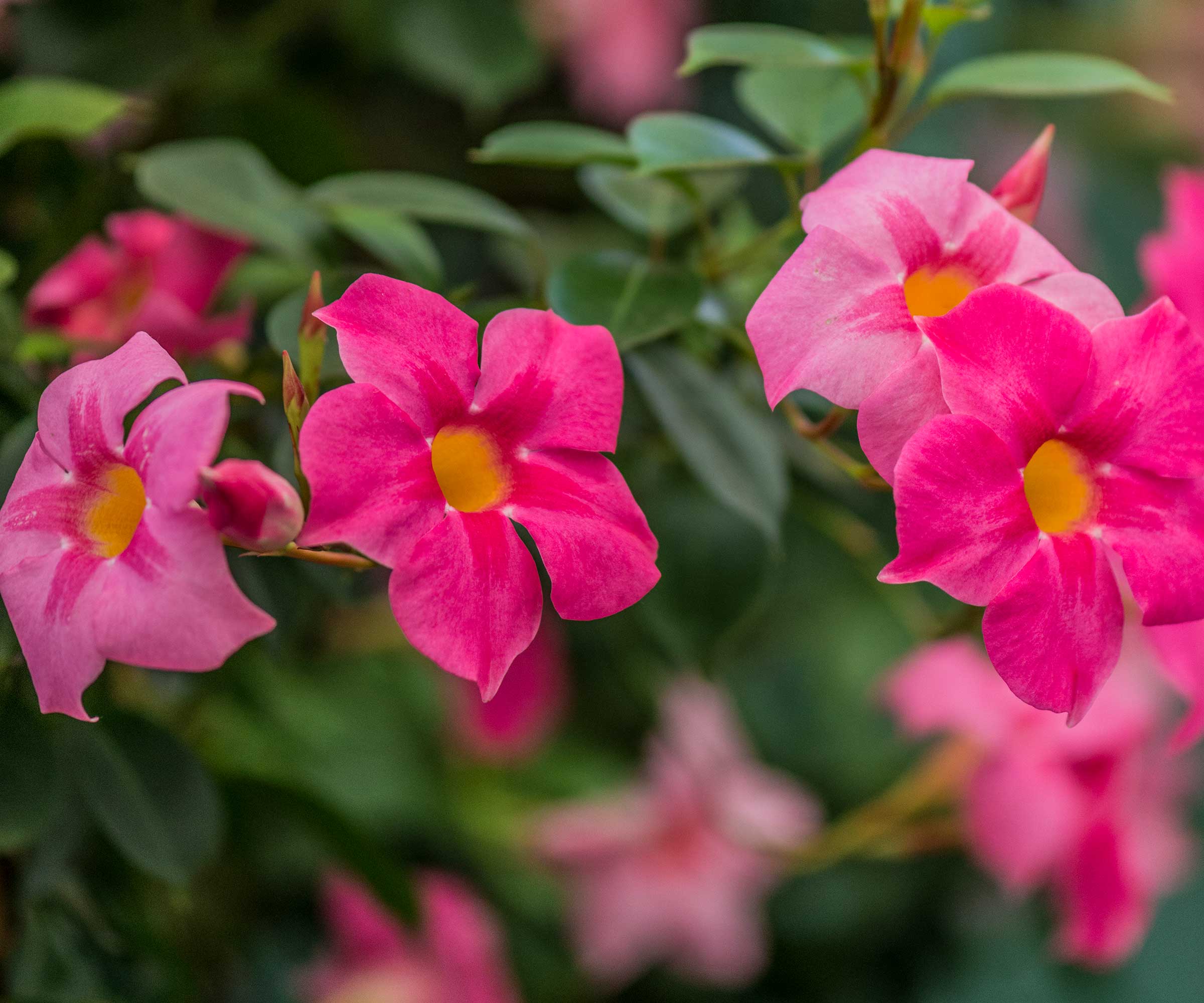
When and how to fertilize mandevilla – hummingbirds will thank you
Mandevilla, also known as rocktrumpet, are flowering climbers that make a stunning impact when used to cover a wall, fence, pergola, or arch. With blooms in shades of red, pink, yellow, or white, they are eye-catching vines.
It is not only humans that adore the flowers, as hummingbirds like mandevilla blooms. The vivid blooms are attractive to hummingbirds as they are nectar-rich, come in highly visible shades, and are perfectly shaped for their long beaks and tongues.
Feeding mandevilla will mean more flowers for these beautiful pollinators. It means understanding when and how to fertilize mandevilla rewards you with healthy vines and more flowers for both you and hummingbirds to enjoy.
When to fertilize mandevilla
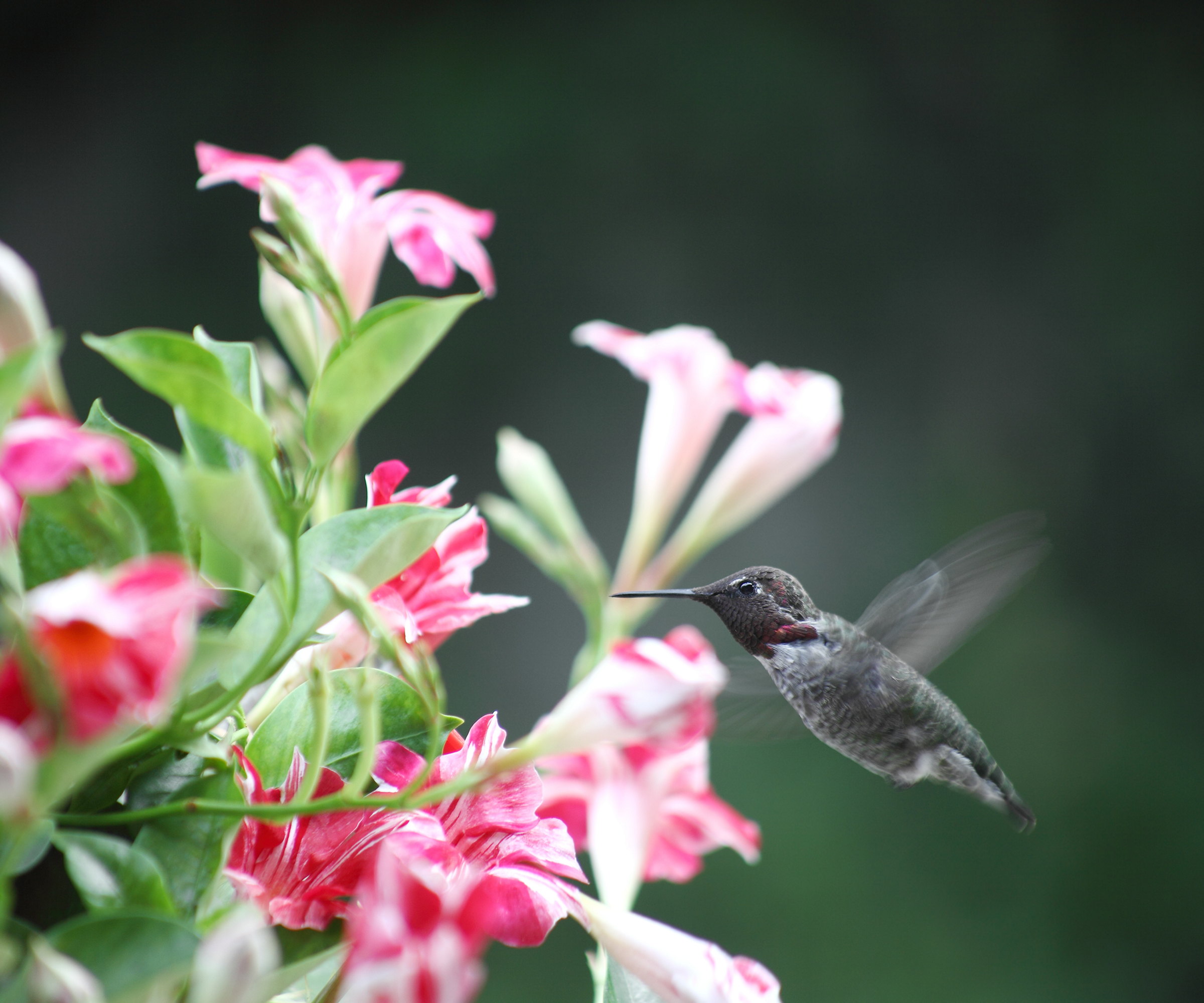
Mandevilla are fast-growing climbing plants that thrive with regular feeding. Taking the time to fertilize mandevilla throughout the season supplies the nutrients the plant needs to grow vigorously and display an impressive array of blooms. This is particularly important if you grow mandevilla in pots.
Design expertise in your inbox – from inspiring decorating ideas and beautiful celebrity homes to practical gardening advice and shopping round-ups.
Getting the nutrient levels right starts even before you plant the mandevilla.
The plants prefer a rich soil type, and adding compost or well-rotted manure to the planting site ensures the soil is fertile and perfectly suited to growing mandevilla. Mulching with organic matter will also release nutrients over time, as well as retain moisture in the soil and suppress weeds.
The vine benefits from an application of slow-release, balanced fertilizer in spring, just as it starts to grow strongly for the season. Such a product contains all the essential plant nutrients and will release them to the plant over the course of several months.
As for how often to fertilize mandevilla, a good all-round feeding regime does not end with just one spring feed.
Mandevilla are hungry vines and, for the best and longest flowering performance, will benefit from being fed every 2-3 weeks once they start blooming with a water-soluble fertilizer high in phosphorus.
Such products are commonly known as 'bloom boosters' as they are formulated with an ideal mix of nutrients to encourage strong blooming over the flowering season. They feature lots of phosphorus, which is key to forming flowers, as well as other essential nutrients for healthy plants.
You should not fertilize mandevilla in the fall or winter, so stop feeding at the end of the flowering period. Doing so would be a fertilizing mistake that will encourage the development of unwanted new growth at the end of the season.
How to fertilize mandevilla
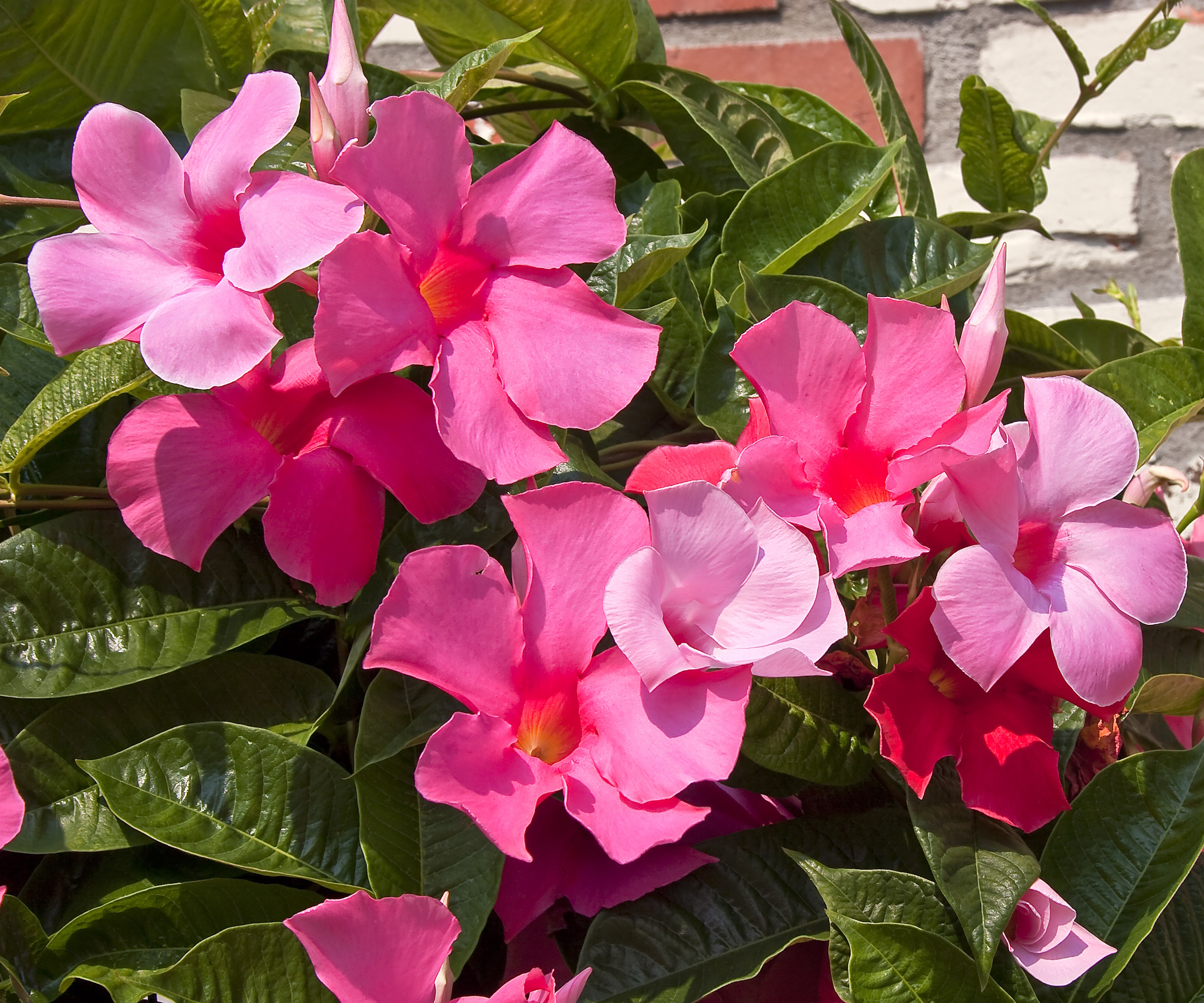
The most suitable products for fertilizing mandevilla differ throughout the growing season.
A fundamental aspect of picking the best fertilizer for flowers is to look at the plant fertilizer numbers. The make-up of nitrogen (N), phosphorus (P), and potassium (K) will be shown in the form of three numbers on any product, and it reflects what the fertilizer will do for plants.
A suitable product to fertilize mandevilla in the spring is a granular, organic, slow-release fertilizer. This should have a balanced NPK of 10-10-10 or 20-20-20 and is incorporated into the soil around the plant.
For example, this general-purpose 10-10-10 garden food at Amazon contains all three major nutrients and is ideal for a wide range of plants, including climbers.
During the flowering stage, the nutrient requirements differ, as does the type of fertilizer. At this stage of the season, look for a liquid feed high in phosphorus – so the middle P number will be higher than the others.
A liquid feed delivers nutrients quickly to the plants, but leaches quickly, so it needs to be reapplied every 2-3 weeks. Such fertilizers are mixed with water and applied when you water plants during the summer.
Such a product is this blossom booster at Walmart with an NPK of 10-30-20, which comes with a measuring spoon to use right correct amount of the powdered concentrate.
FAQs
Can I use Miracle-Gro on my mandevilla?
There are Miracle-Gro products suitable for feeding mandevilla. One example is the Miracle-Gro Bloom Booster Flower Food, available at Amazon, which you can use during the flowering season to encourage new buds and blooms. You can also get multi-purpose plant food for use in spring.
Are coffee grounds good for mandevilla plants?
Coffee grounds can be good for plants, as they can provide a boost of nutrients to the soil as they break down. However, coffee grounds will not make a great replacement for any of the fertilizers mentioned above.
Feeding all climbers is essential for the best show, as their fast-growing nature makes them hungry plants. Just like with mandevilla, you need to fertilize passion flowers often for healthy growth and bumper blooms. For these tropical plants, feed in early spring, at the first sign of new growth, and continue to fertilize at least monthly from April until the end of August.
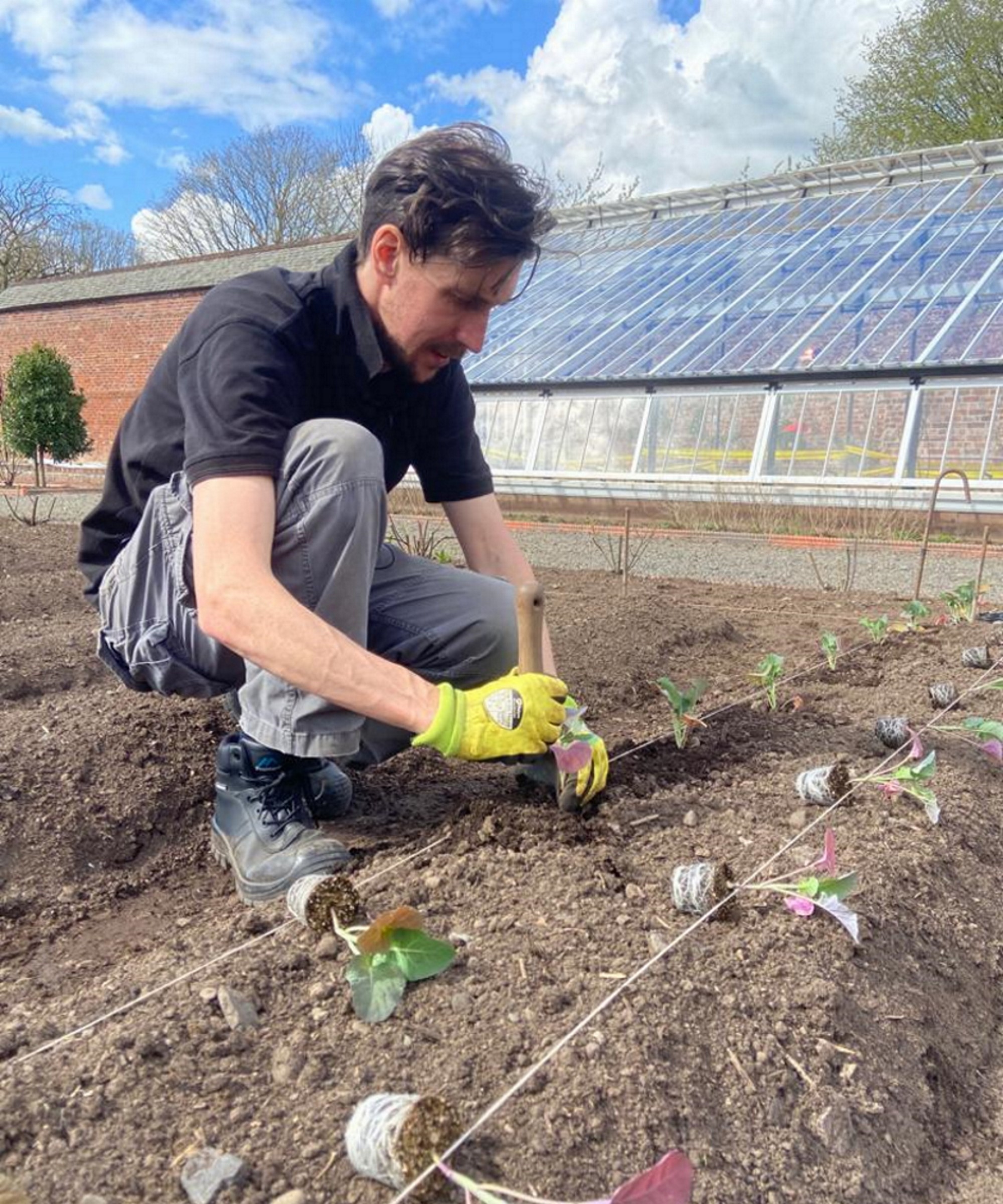
Drew has worked as a writer since 2008 and was also a professional gardener for many years. As a trained horticulturist, he worked in prestigious historic gardens, including Hanbury Hall and the world-famous Hidcote Manor Garden. He also spent time as a specialist kitchen gardener at Soho Farmhouse and Netherby Hall, where he grew vegetables, fruit, herbs, and cut flowers for restaurants. Drew has written for numerous print and online publications and is an allotment holder and garden blogger. He is shortlisted for the Digital Gardening Writer of the Year at the 2025 Garden Media Guild Awards.
You must confirm your public display name before commenting
Please logout and then login again, you will then be prompted to enter your display name.
